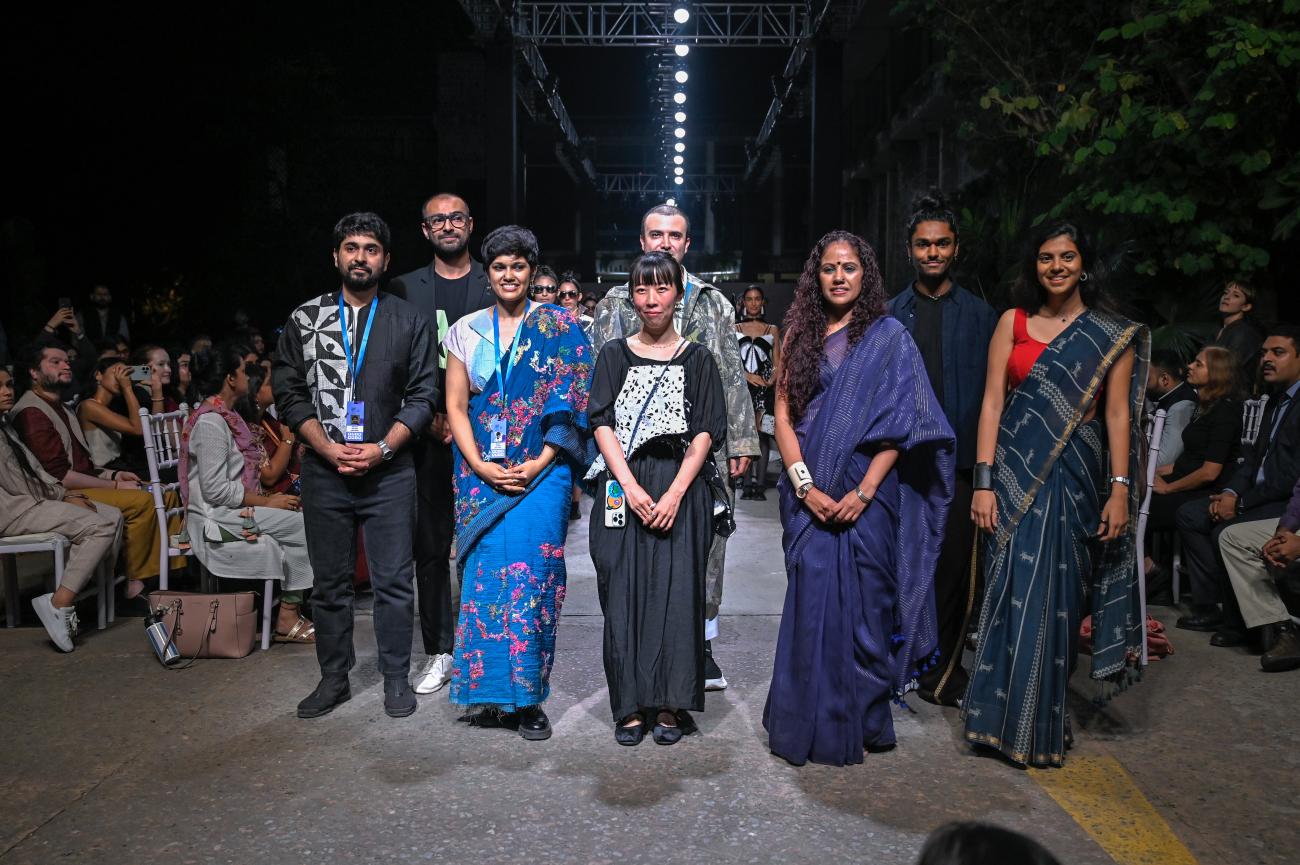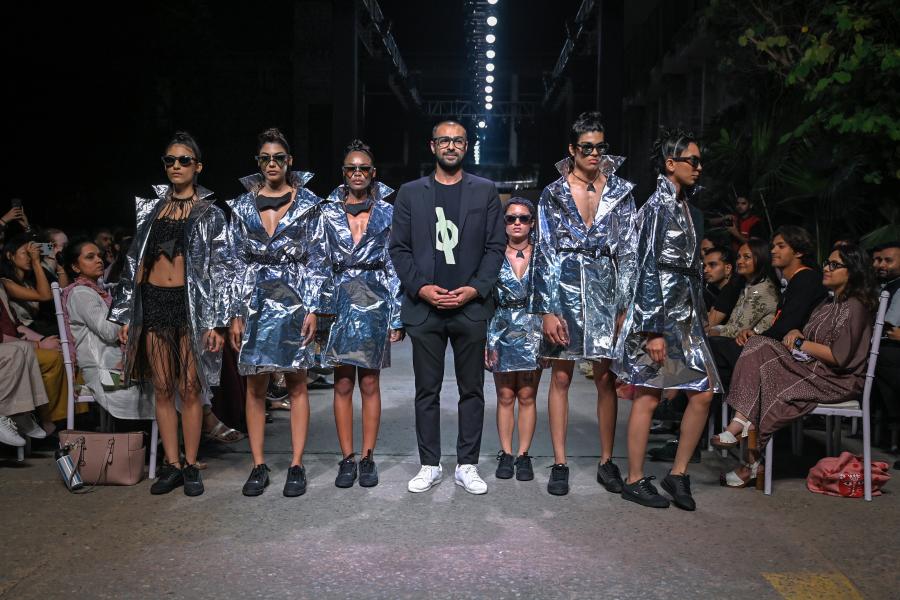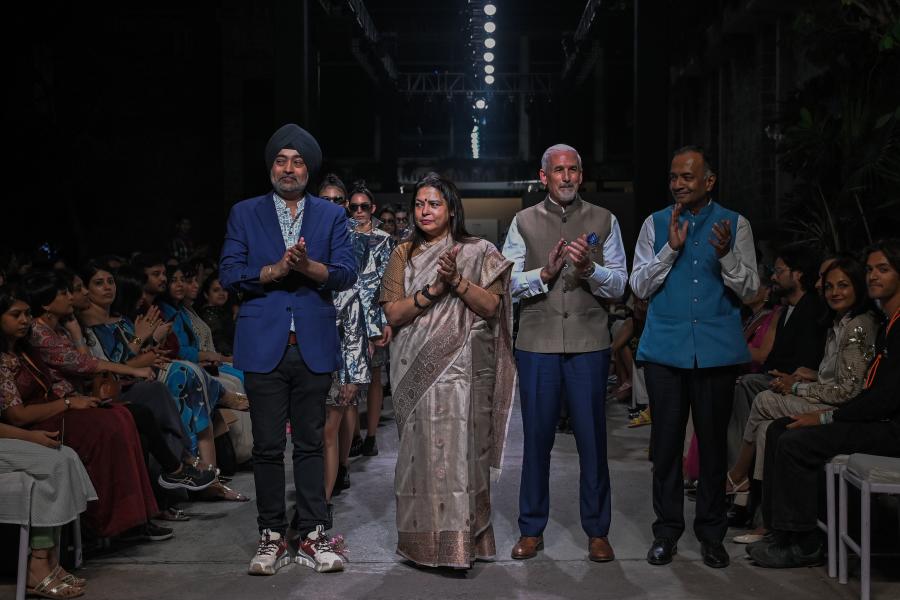India’s Circular Design Challenge helps drive sustainability in fashion

CDC is India’s largest award for sustainable fashion, a platform for designers who embrace circularity as a key design principle.
The designer sunglasses look innocuous enough, easy to imagine being worn by fashionistas in Delhi’s upscale Khan Market. But as Anish Malpani, the founder of Ashaya, the social enterprise behind the glasses, explains, the manufacture of these sunglasses saves tonnes of multi-layered plastics from ending up in landfills.
That’s because these sunglasses are made of recycled materials extracted from the plastic in chip packets.
Ashaya won the fifth annual Circular Design Challenge (CDC), an initiative of R|Elan, a textile innovation brand under Reliance Industries Limited, in partnership with the United Nations in India, Lakmé Fashion Week, and the Fashion Design Council of India (FDCI).
By winning Anish received funding worth 15 lakh rupees, a trophy, a six-month mentorship and a stand-alone showcase at Lakmé Fashion Week in partnership with FDCI in March next year.
“The heart of what we do is circular,” Anish told the media later. “We’re focused on using waste and increasing the value of that waste. Design comes later and is only a tool for us.”

CDC is India’s largest award for sustainable fashion, a platform for designers who embrace circularity as a key design principle. Ashaya and five other finalists showcased designs rooted in circularity, the elimination of waste, recycled materials, and the regeneration of nature to reduce the environmental and social costs of the textile and fashion industries.
The need for transformative change in the industry is clear. Today, it is responsible for up to 8% of global greenhouse gas emissions, or more than the aviation and shipping industries combined, and consumes around 4% of global fresh water, often in water-parched places. And while emissions must fall by 7.6% every year from 2020 to meet global commitments to avoid the worst impacts of climate change, emissions from the fashion industry are still increasing by 2.7% every year.
Much of this pollution is driven by unsustainable production and consumption habits. Across the world, people are buying 60% more clothes and wearing them for half as long. And over the last 15 years, fashion consumption has more than doubled, while the number of times a garment is worn before being discarded has decreased by 36%. Garments are increasingly made from synthetic fibres, which are filling the world’s oceans with microplastics.
The industry must therefore undergo a deep transformation to become sustainable. The fashion industry in India, a country with a deep history of reusing and repurposing textiles, from saris that have been handed down from generation to generation, to fabrics that have lost their shape being repurposed for household needs, is leading the way.
CDC was launched in 2018 with the goal of supporting India in becoming a sustainable fashion hub. It was conceived in the spirit of Sustainable Development Goal 12, ‘"responsible consumption and production", reconciling sustainable environmental practices with the fashion and textile industry while promoting social and economic development.
The Challenge builds on India’s comparative advantages. India is among the world’s largest producers of fibre crops, textiles and apparel, with a fashion industry that is estimated to grow to $190 billion by 2025-26, providing direct employment to 45 million people. India also accumulates 8.5% of global textile waste each year, meaning that driving sustainability in the Indian fashion industry will have a global impact.
Speaking at the fifth CDC, held last month at UN House in New Delhi, Shombi Sharp, UN Resident Coordinator in India, said the initiative “demonstrates fashion can be a powerful driver for responsible production and consumption, weaving together style and sustainability. The CDC reflects the centrality of India as a leader in both sustainable culture and climate action. Where India, and its fashion industry goes, the world will increasingly follow.”
The 2023 edition saw an expansion of the Challenge to designers and entrepreneurs in the UK, EU, and Asia–Pacific region, with new international partners including the British Council, the Instituto Marangoni, and the Redress Award.
The Challenge is also strongly aligned with the principles of the global Mission Lifestyles for Environment (LiFE) movement, launched last year by Indian Prime Minister Narendra Modi and UN Secretary-General António Guterres.
In a world where three-fifths of all clothing ends up in incinerators or landfills within a year of being manufactured, LiFE encourages consumers to move towards more responsible conservation and the sustainable use and regeneration of natural resources.
As Minister of State Meenakshi Lekhi remarked at the Challenge, it is vital to make everyone – whether fashion designers or consumers -- responsible for their actions.

“The intention is to increase positivity and work towards finding solutions, because that’s the very Indian way, of finding solutions, taking the middle path,” the Minister said.
UNEP India, meanwhile, is working with relevant stakeholders including government, industry, civil society and educational institutes to mainstream sustainability and circularity in the textile sector in India. Some key initiatives include roadmap development of a sustainable hub in the Surat textile cluster, and the development of a sustainable fashion curriculum with the National Institutes of Fashion Technology







